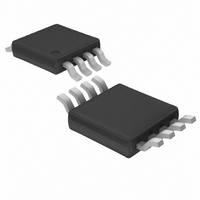LTC1729CMS8-4.2 Linear Technology, LTC1729CMS8-4.2 Datasheet - Page 10

LTC1729CMS8-4.2
Manufacturer Part Number
LTC1729CMS8-4.2
Description
IC CTRLR BATT CHRGR LI-ION 8MSOP
Manufacturer
Linear Technology
Datasheet
1.LTC1729CS8-8.2.pdf
(16 pages)
Specifications of LTC1729CMS8-4.2
Function
Charge Management
Battery Type
Lithium-Ion (Li-Ion)
Operating Temperature
0°C ~ 70°C
Mounting Type
Surface Mount
Package / Case
8-TSSOP, 8-MSOP (0.118", 3.00mm Width)
Lead Free Status / RoHS Status
Contains lead / RoHS non-compliant
Available stocks
Company
Part Number
Manufacturer
Quantity
Price
Company:
Part Number:
LTC1729CMS8-4.2
Manufacturer:
LT
Quantity:
10 000
Part Number:
LTC1729CMS8-4.2
Manufacturer:
LINEAR/凌特
Quantity:
20 000
Company:
Part Number:
LTC1729CMS8-4.2#TRPBF
Manufacturer:
HITACHI
Quantity:
100
APPLICATIO S I FOR ATIO
LTC1729 Series
Second, if the battery is removed from the charger, the
V
gram section. This causes the state machine to make the
V
exit the charger “ON” state is with a V
to the Precondition state. The battery will need to drop
below 2.6V/cell to be less than V
scenario.
Once in the Pause state, there are two ways to proceed.
The first is to go to the No Bat state. This requires that the
V
second. From these conditions, the LTC1729 interprets
that a battery has been removed. If the voltage on the BAT
pin stays less than V
the state machine returns to the Charge state (Precondi-
tion and charger “ON”). This is interpreted as a momentary
open caused by the battery pack protection circuitry or
loose contact.
The Done state can only proceed to the No Bat state. From
outside the LTC1729 this transition is undetectable. The
requirement for this transition is for the BAT pin voltage to
exceed V
assumes that the battery has been removed.
From the No Bat state, there is only one possible transition.
The No Bat state can move to the Charge state if the voltage
on the BAT pin remains less than V
LTC1729 will now work on the assumption that a new
battery has been installed.
Although the Precondition and Charger “ON” both reside
in the Charge state, there are differences between these
states. The main purpose of the Precondition state is to
slowly bring a heavily discharged battery up to a minimum
level before full charge current begins. The Precondition
state uses a 12mA current source to trickle charge the
battery with a 1-hour time-out transition to the Done state.
The Charger “ON” state enables the external charger and
the time-out is increased to three hours. For the entire
time in the Precondition state, the STATUS pin uses a hard
pull-down. In the Charger “ON” state the STATUS pin uses
two types of pull-down: hard pull-down and soft 50 A
pull-down.
10
MAX
BAT
BAT
> V
signal is activated as mentioned in the Block Dia-
remain greater than V
MAX
MAX
transition to the Pause state. The third way to
for more than one second. The IC now
U
MAX
for more than one second, then
U
MAX
MIN
MAX
W
for more than one
BAT
. This is not a likely
for one second. The
< V
MIN
U
transition
Status Output Pin
The STATUS pin is designed to provide an indication that
the battery is charging. Once the current drops below the
C/10 threshold, the battery is close to being fully charged.
The LTC1729 turns off the hard pull-down once the
C/10 comparator is active for more than three seconds.
The 50 A soft pull down remains in effect until the 3-hour
time-out is completed or the input power is removed.
By using two different value pull-up resistors, a micropro-
cessor can detect three states from this pin (charging,
C/10 and stop charging). See Figure 7.
When the LTC1729 is in charge mode, the STATUS pin is
pulled down by an internal N-channel MOSFET. To detect
this mode, force the digital output pin, OUT, high and
measure the voltage at the STATUS pin. The N-channel
MOSFET will pull the pin low even with a 3k pull-up resis-
tor. Once the charge current drops to 10% of the full-scale
current (C/10), the N-channel MOSFET is turned off and a
50 A current source is connected to the STATUS pin. The
IN pin will then be pulled high by the 3k pull-up. By forcing
the OUT pin into a high impedance state, the current
source will pull the pin low through the 200k resistor.
When the internal timer has expired, the STATUS pin will
change to high impedance state and the 200k resistor will
then pull the pin high to indicate the charging has stopped.
Terminate at C/10 Current
Charging can also be terminated using C/10 detection
before the 3-hour time-out. By connecting the low side of
the NTC thermistor to the STATUS pin instead of ground,
Figure 7. Microprocessor Interface
LTC1729
V
V
STATUS
CC
IN
8
6
200k
3k
OUT
IN
PROCESSOR
V
DD
1729 F07













